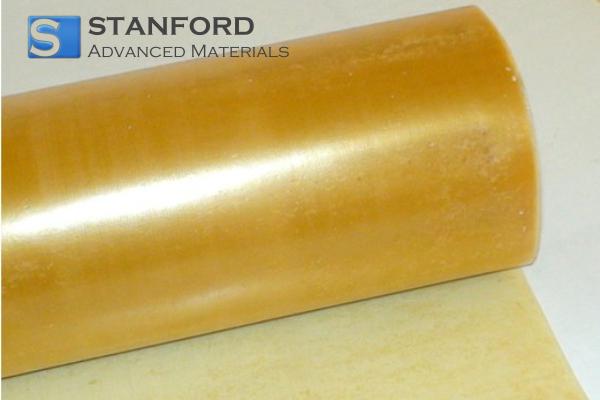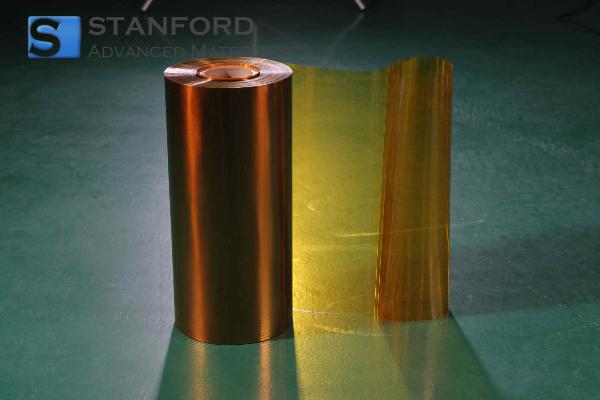Gallium: Element Properties And Uses
Description
Gallium is a chemical element with the symbol Ga and atomic number 31. It is a soft, silvery metal known for its specific properties and its wide range of applications across various industries.
Introduction to the Element
Gallium is a post-transition metal that was discovered in 1875 by the French chemist Paul-Émile Lecoq de Boisbaudran. It is commonly found in trace amounts in minerals such as Bauxite and Sphalerite. Gallium does not occur in its elemental form in nature; rather, it is recovered through refining processes from ores. It is known for its low melting point and its ability to remain in a liquid state at temperatures slightly above room temperature.
Description of Chemical Properties
Gallium is noted for its capacity to form compounds with numerous elements. In the majority of these compounds, it exhibits the +3 oxidation state, which is its most stable form. Some of its key chemical properties are:
- Reactivity: Gallium reacts with atmospheric oxygen to form gallium oxide (Ga₂O₃), a compound of stable composition. It also reacts with halogens, acids and bases.
- Alloy Formation: Gallium is known to form alloys with many metals, including aluminium, gold and silver. These alloys exhibit altered mechanical strength and electrical conductivity values.
- Non-Corrosive Behaviour: Despite its reactivity, gallium does not readily undergo corrosion, which makes it valuable in specialised applications.
Table with Data on the Physical Properties
|
Property |
Value |
|
Atomic Number |
31 |
|
Density |
5.91 g/cm³ |
|
Melting Point |
29.76°C (85.57°F) |
|
Boiling Point |
2204°C (3999°F) |
|
Electrical Conductivity |
Good |
|
Thermal Conductivity |
40.6 W/m-K |
|
Appearance |
Silvery-white metal |
|
Crystal Structure |
Orthorhombic |
For further information, please visit Stanford Advanced Materials (SAM).
Common Applications
Gallium is utilised in various industries, from electronics to medical device technology. Some of the common applications include:
- Semiconductors: Gallium is crucial for the fabrication of semiconductors. Gallium arsenide (GaAs) is used in the manufacture of light-emitting diodes (LEDs), lasers and solar cells.
- Aerospace: Gallium is employed in aerospace engineering, particularly in high-temperature environments, wherein it remains in liquid form at temperatures marginally above ambient.
- Optical Devices: Gallium compounds are incorporated in optical devices, including infrared detectors and thermometers.
- Medical Devices: Gallium compounds are used in medical imaging, particularly as radiopharmaceuticals for scanning and diagnosis.
Preparation Methods
Gallium is primarily obtained as a by-product during the refining of Bauxite, the principal ore for aluminium production. It is typically extracted through a sequence of chemical reactions. One of the most common methods for isolating gallium is the Bayer process, in which gallium is separated from aluminium by dissolution in sodium hydroxide.
In laboratory settings, gallium can be produced by reducing gallium oxide (Ga₂O₃) with hydrogen or other reducing agents. Gallium is also extracted from zinc ores, whereby it is dissolved in a solution and subsequently precipitated using various methods.
Related Industrial Products
The specific properties of gallium support the development of various industrial products, including:
- Gallium arsenide (GaAs): Widely used in electronic circuits and optoelectronic devices such as solar cells, LEDs and lasers.
- Gallium nitride (GaN): A material employed in high performance electronics and LEDs, given that it can operate at elevated temperatures and voltages compared to other semiconductors.
- Gallium-Based Alloys: Gallium is utilised in low-melting-point alloys which are applied in thermometers, electronics and other specialised fields.
Frequently Asked Questions
What is gallium used for in electronics?
Gallium is used in the fabrication of semiconductors, particularly in the form of gallium arsenide, which is essential for producing LEDs, solar cells and lasers.
Does gallium occur naturally?
No, gallium does not occur in its elemental form in nature. It is typically obtained during the refining of other metals from ores such as Bauxite and Sphalerite.
What are the physical properties of gallium?
Gallium is a silvery-white metal with a low melting point of 29.76 °C, such that it remains liquid at temperatures just above ambient.
Is gallium harmful to humans?
Gallium is generally not toxic; however, exposure to large quantities of gallium compounds may result in irritation or other health issues. Appropriate handling and safety measures are required when working with gallium.
How is gallium prepared for industrial use?
Gallium is primarily obtained as a by-product during the refining of aluminium and zinc ores. It is extracted using chemical processes, such as the Bayer process, from ores like Bauxite.

 Bars
Bars
 Beads & Spheres
Beads & Spheres
 Bolts & Nuts
Bolts & Nuts
 Crucibles
Crucibles
 Discs
Discs
 Fibers & Fabrics
Fibers & Fabrics
 Films
Films
 Flake
Flake
 Foams
Foams
 Foil
Foil
 Granules
Granules
 Honeycombs
Honeycombs
 Ink
Ink
 Laminate
Laminate
 Lumps
Lumps
 Meshes
Meshes
 Metallised Film
Metallised Film
 Plate
Plate
 Powders
Powders
 Rod
Rod
 Sheets
Sheets
 Single Crystals
Single Crystals
 Sputtering Target
Sputtering Target
 Tubes
Tubes
 Washer
Washer
 Wires
Wires
 Converters & Calculators
Converters & Calculators
 Write for Us
Write for Us




 Chin Trento
Chin Trento



